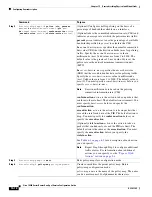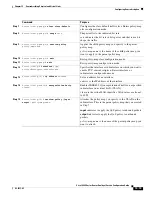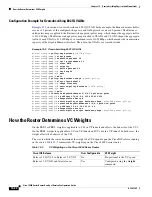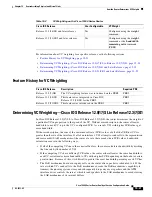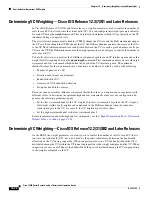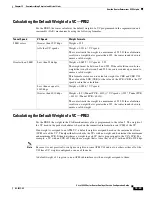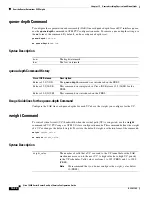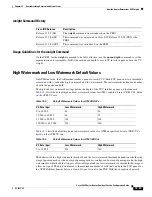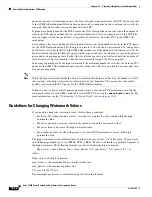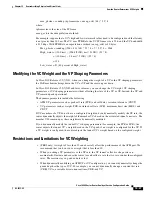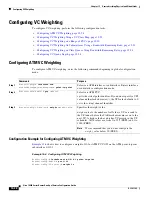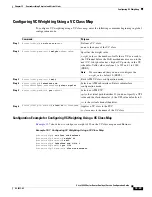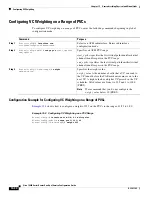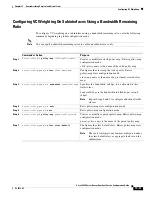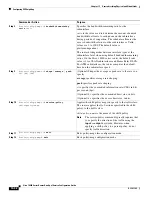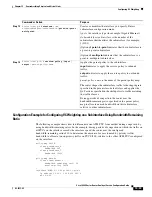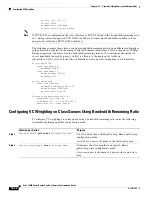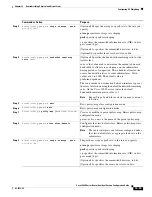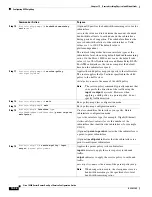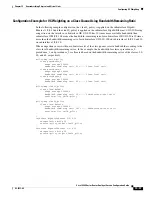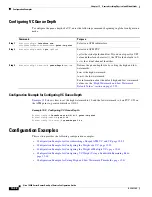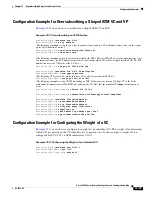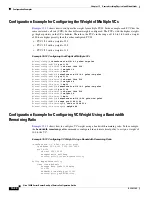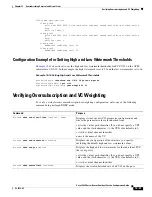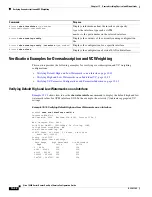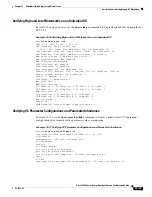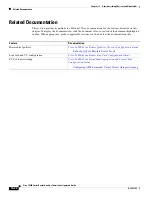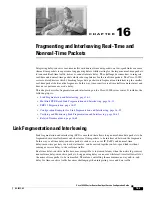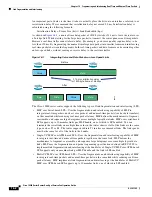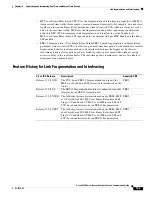
15-32
Cisco 10000 Series Router Quality of Service Configuration Guide
OL-7433-09
Chapter 15 Oversubscribing Physical and Virtual Links
Configuring VC Weighting
Step 8
Router(config-pmap-c)#
bandwidth remaining
ratio
ratio
Specifies the bandwidth-remaining ratio for the
subinterface.
ratio
is the value used to determine the amount of unused
bandwidth to allocate to each queue on the subinterface
during periods of congestion. The scheduler allocates the
excess bandwidth relative to other subinterfaces. Valid
values are 1 to 1000. The default value is
platform-dependent.
The router distinguishes between interface types at the
subinterface level when using default bandwidth-remaining
ratios. On the Cisco 10000 series router the default ratio
value is 1 for VLAN subinterfaces and Frame Relay DLCIs.
For ATM subinterfaces, the router computes the default
based on the subinterface speed.
Step 9
Router(config-pmap-c)#
shape
{
average
|
peak
}
cir
[
bc
]
[
be
]
(Optional) Shapes the average or peak rate to the rate you
specify.
average
specifies average rate shaping.
peak
specifies peak rate shaping.
cir
specifies the committed information rate (CIR), in bits
per second (bps).
(Optional)
bc
specifies the committed burst size, in bits.
(Optional)
be
specifies the excess burst size, in bits.
Step 10
Router(config-pmap-c)#
service-policy
child-policy-name
Applies the child policy map you specify to the traffic class.
The router applies the QoS actions specified in the child
policy to the traffic class.
child-policy-name
is the name of the child policy.
Note
The service-policy command typically requires that
you specify the direction of the traffic using the
input
or
output
keywords. However, when
applying a child policy to a parent policy, do not
specify traffic direction.
Step 11
Router(config-pmap-c)#
exit
Exits policy-map class configuration mode.
Step 12
Router(config-pmap)#
exit
Exits policy-map configuration mode.
Command or Action
Purpose

